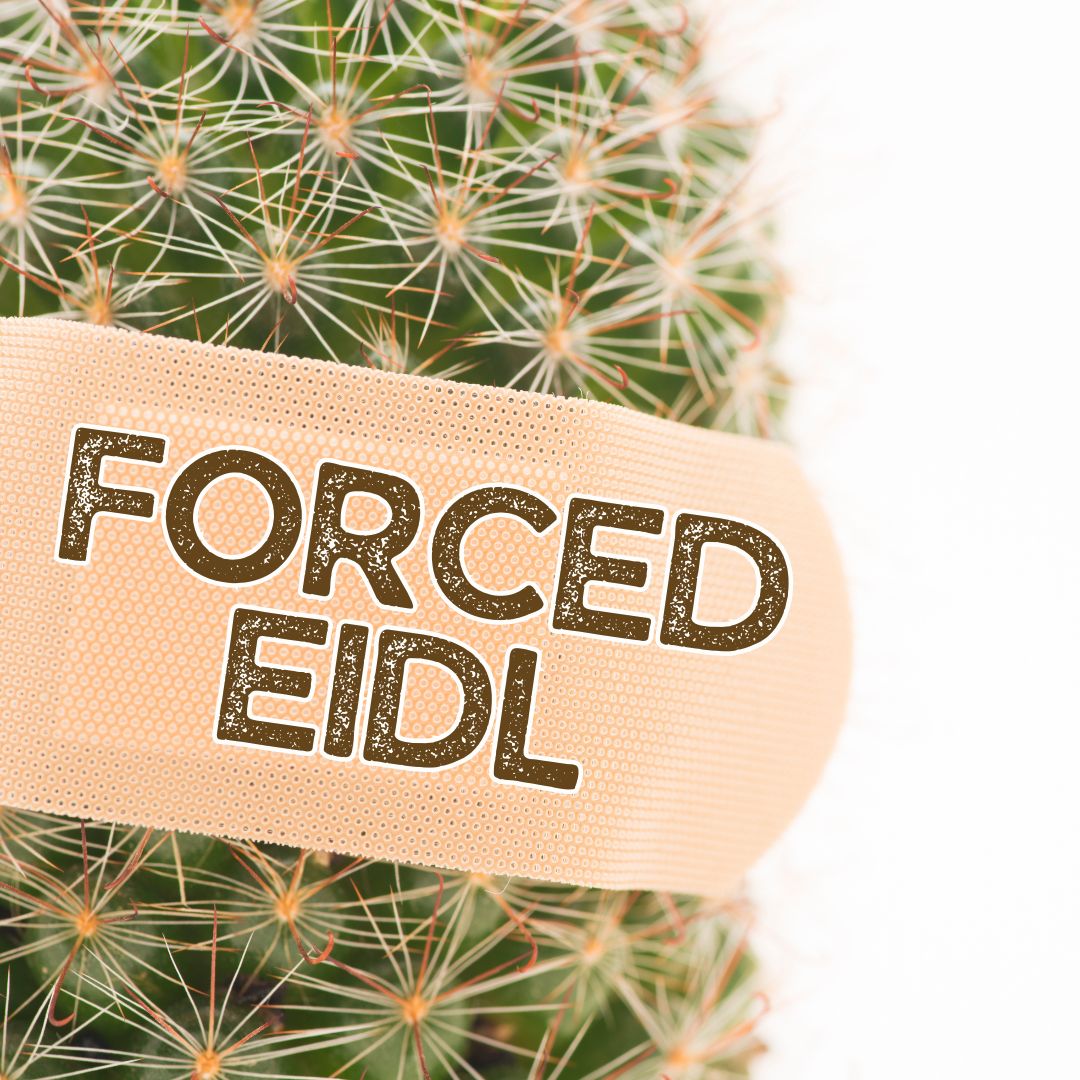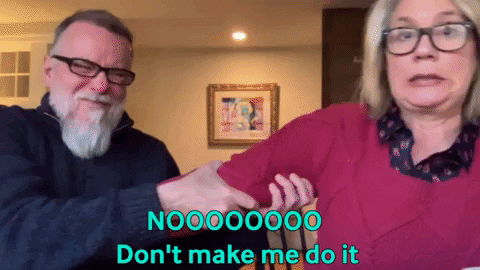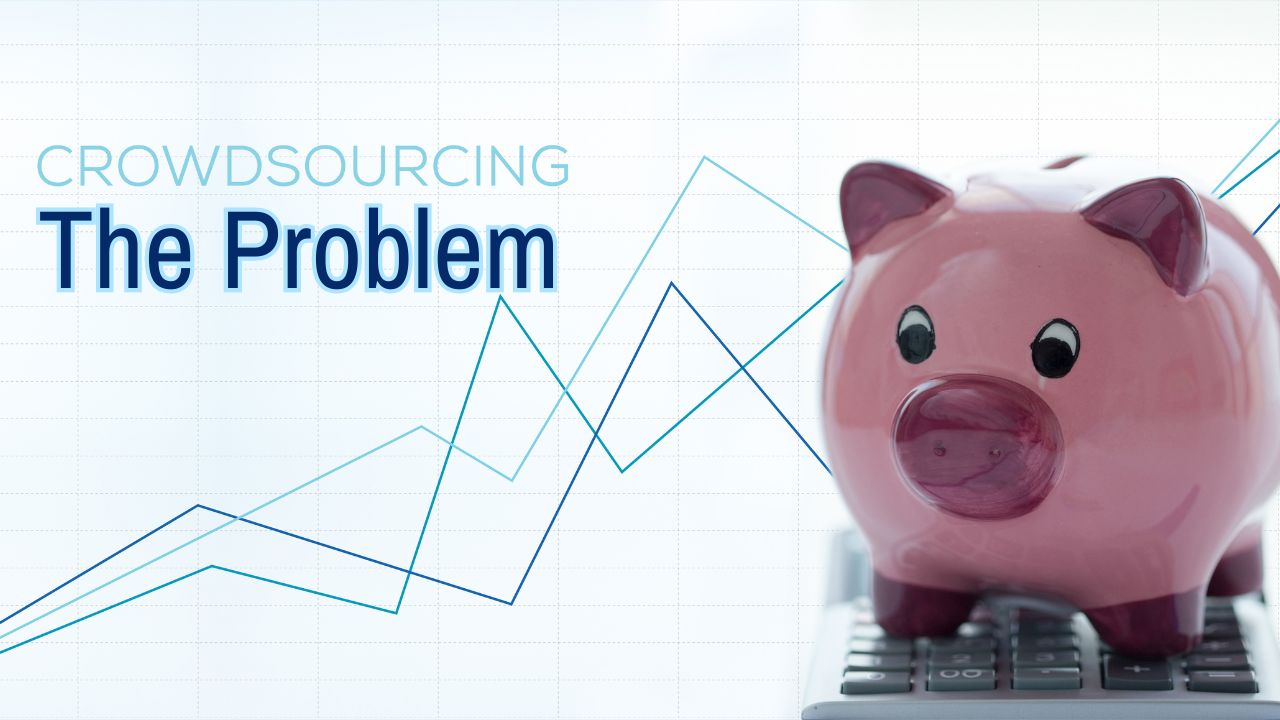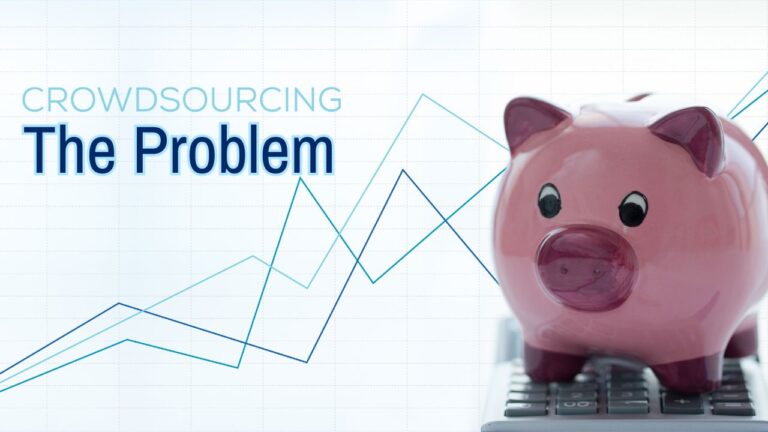We received an inquiry from a Small Business Owner with a COVID-19 EIDL. Her (unedited) inquiry reads as follows:
“I was forced when I feel under duress during Covid to accept a loan from the SBA that I did not want to be forced into simply because the workers I had were independent contractors versus employees. The nature of my business is most of the instructors will not be employees. They are independent contractors so we are in a bind. If I did not accept the loan, my business would have immediately collapsed, and I would have lost all of my students and the instructors as well. Do you offer assistance with this to avoid bankruptcy.”
We’re passionate in our commitment to supporting Small Business. That’s why we give away a lot of free expert information and advice. It’s why we offer a one-hour paid consultation call where you can speak directly with Trevor, pick his brain, gain some clarity, and, sometimes, he’ll call the SBA with you on the line to help with challenging situations or questions.
The business owner quoted above never followed up with us to book the one-hour paid consultation call. It’s a shame because we would have done two things to help.
First, we would’ve explained the process of remediation on the repayment of the COVID-19 EIDL, with a focus on avoiding default and bankruptcy. Second, as we’ve seen in many of our calls, we would have provided some relief and in fact, other business owners have often said at the end of the call, “I feel so much calmer now.”
Trevor was a Mortgage Banker for 30 years. He learned a long time ago how to explain complicated financial procedural concepts to Clients, and how to remove emotion from the process. But let’s address something in the quoted message above about being “forced into” accepting the SBA’s COVID-19 EIDL.
First and foremost, no one forced anyone to take those funds. The application process was 100% voluntary based on need. If you needed the support immediately or thought you might need it soon, the funds were there for you to request.
Next, it appears the business was not eligible for the Paycheck Protection Program (PPP) loan(s) due to the nature of the employment relationship between the business and its workforce.
The business owner states that the instructors for the business are not employees, they are independent contractors. She states that “…the nature of my business is most of the instructors will not be employees.”
Let’s review and discuss these concepts and challenges.
The SBA’s PPP loan became available through approved Lenders as a result of legislation included by Congress in the COVID CARES Act. The PPP provided a low-interest rate of 1%. If the PPP loan was issued prior to June 5, 2020, it would have a two-year repayment term. After June 5, 2020, the repayment term is five years.
The program provided for 100% Forgiveness of the loan, essentially making this a “grant” of sorts. The purpose of the program was to keep people paid as employees, not needing to request Unemployment benefits.
For example, if your business was required to close to the public or to staff due to state-mandated pandemic lockdowns, the Congress of the United States wanted your business to continue to pay your employees their salaries as if the business was open.
The loan solved two problems.
First, avoiding the government process of Unemployment benefits both in terms of cost to the government and access to receive those benefits by the unemployed workers. In other words, the employee would still get their regular paycheck, and not have to go through the worry and wait for an approval of the unemployment benefits.
Second, the business could maintain its staffing so that, once lockdowns were lifted, the business wouldn’t have to go out to find new employees and replace departed employees.
While we worked to help our clients obtain approvals for the SBA’s COVID-19 EIDL program as paid consultants/preparers, we provided a courtesy service to many of those clients to process their PPP loan applications. We were not permitted by law to charge a fee for assisting. We processed several dozen PPP loans.
One issue that kept coming up during our review of the eligibility of a client’s PPP application was this misunderstanding of employee versus independent contractor. When we asked the question, “How many F/T employees does the business employ?” we would get an answer, for example, “9 employees, not including me (the business owner).”
When we reviewed the business tax returns, under the line for “Salaries/Wages” we’d often see that line item blank. That means no W2 employees. That means the “9 employees” are not actually employees; they’re independent contractors.
And, sure enough, on the line of the tax return for “Contract labor” there would be a dollar amount entered.
We’d have to call the business owner to explain the difference of employment classification and the reason why the business was not eligible for the PPP loan. We explained how the independent contractors working for the business would need to apply for their own, individual PPP loans because they were essentially small businesses.
Many of the business owners pushed back on our assertions of the ineligibility for the PPP loan. “But they work for me” was a common response. Okay, well, by itself, that’s a violation of IRS and Department of Labor employee classification rules. Let’s set that aside for now.
In that particular moment, we attempted to request PPP loan assistance, and it didn’t matter what the business owner thought about their relationship to the people who worked for the business. They were not employees, thus, no PPP loan.
The proceeds of the SBA’s COVID-19 EIDL could be used to pay employees. The program’s purpose is to provide the business with money to make up for revenue lost due to a disaster to be used to pay ordinary operating expenses.
This raises the question, “Can you use the COVID-19 EIDL funds to pay independent contractors working for the business?”
If the funds were used to pay those contractors while the business was on lockdown, without the contractors actually doing any work, then the answer is most likely, “No, you cannot use the funds to pay independent contractors.”
As previously mentioned, those independent contractors would have to apply for their own, individual PPP loans.
On the other hand, if the independent contractors were performing actual work services for the business at the time of the lockdown…and after…then, yes, the business could use the funds to pay those contractors as long as it matched previous operational standards of work and payment.
Meaning, if your independent contractor provided, let’s say, 38 hours of billable work hours to your business before the pandemic, and continued to provide similar services during the pandemic, then, yes, you could pay those contractors as an “ordinary operating expense.”
As we’ve discussed so far, many small business owners had challenges with this misclassification of their working staff. And those challenges became a horror-movie-level monster when these businesses were confronted with their need for the PPP loans, and the use of the EIDL funds.
We don’t know where the concept of misclassification of employees came about.
However, we know it’s been happening for quite some time. And we don’t know how it came to be that so many small businesses jumped on the “independent contractor” bandwagon.
What we do know is that too many small businesses treat their actual employees like independent contractors. From the employer side, the business saves on contributions to payroll taxes, disability insurance, unemployment insurance, and more.
The business avoids uncomfortable situations revolving around the issues of employee benefits. And most of the time, the business treats the independent contractor like an employee with work rules, scheduling requirements, and more.
The true definition of an independent contractor is that a person sets their own work schedules and standards. The small business can only provide basic guidance on the task to be achieved by the contractor. The independent contractor determines if, when, and how they will accomplish the result requested by the business.
Don’t believe us? You can read the classification rules on the IRS website for more information.
But these misclassification issues are legendary around the United States. Employees are paid as independent contractors but are required to work under employment rules and standards.
For their part, we’ve seen how the “employee” who’s really an independent contractor thinks they’re doing great because they get more money in their paycheck. They’re not aware of two important features of their “misclassified” employment status.
First, they’re not employees. Their employer literally cannot tell them what to do, when to do it, and so much more. Secondly, the misclassified employee is responsible for their own payroll taxes, including paying a “self-employment” tax on their annual tax return. Those additional taxes they pay actually make their overall annual take-home pay LESS than if they were properly paid as a W2 employee.
Let’s return to the email from the business owner who was “forced” to take the EIDL.
While we never spoke with her because she didn’t book the paid consultation call, we’ll hazard the guess that she’s guilty of the misclassification of her staff like so many other business owners. We’re confident because of her annoyance at being blocked from the PPP loan due to the employment classification of “independent contractors.”
We make this fair assessment because of our previous experience during the pandemic of speaking to thousands of small business owners, and how so many of them misclassified their employees.
Somewhere along the way, this small business owner decided to pay her employees as independent contractors, probably as a result of a conversation with her tax professional or bookkeeper so that she could lower her payroll expenses and improve bottom-line cash flow. We’ve seen this too often.
That strategic decision she made is the reason she was “forced into” the COVID-19 Economic Injury Disaster Loan, not for any other reason, but a bad decision she made to operate her business.
But is it a bad thing to have received the COVID-19 EIDL? We don’t think so.
The program for the COVID-19 pandemic was a modified version of the SBA’s traditional natural disaster loan; a program created in 1953 to help small businesses recover from a natural disaster. The loan program helps to repair physical damage from the disaster and recoup lost revenue as a result of the disaster.
The loans are low cost with terms as long as 30 years. That makes these loans very attractive from an affordability perspective.
We know from our experience of speaking to so many business owners during the pandemic, that many business owners had never taken on any debt for their businesses. Borrowing money to manage their business was a new, and often, unwelcomed concept for them.
We argue that had business owners, like the person in this example cited above, made better quality, strategic decisions for their business, they would have fared better in so many ways, not only by having access to the PPP loan.
We also encountered so many businesses with tax returns that zapped all their revenue with mountains of expenses, all with a view towards lowering net income and ultimately paying a lower income tax bill.
However, that lower net income could harm the business when trying to obtain financing because lenders often determine the maximum loan amount based on the net income.
We digress. Again, was it a “bad thing” to have taken a COVID-19 EIDL? In our humble, professional opinion, NO, not at all.
The program has some basic features that make this financing package very attractive indeed.
First, is the low-interest rate. As a for-profit business during the pandemic, the interest rate is 3.75%. For non-profits, the rate is 2.75%. Even at the time of the pandemic, those rates were far below market rates for business financing. Even more so today with the recent increases in interest rates.
Next, the loan is a fixed-rate loan. The rate…and the payment…never change! This is unusual in commercial financing because many business loans feature a variable rate feature.
The SBA’s COVID-19 EIDL is a 30-year loan. With the combination of low-interest rates and extremely long-term (most commercial loans are substantially lesser terms of repayment period), the money is, as one of our colleagues and financial services professionals recently said, “free money!”
But wait, there’s more.
There’s no prepayment penalty. If a business owner truly despises the idea of carrying debt on the books, they can create an aggressive repayment plan to pay off the 30-year loan earlier with no penalty. Again, unusual!
Many commercial lenders charge a penalty for paying off their loans early, and those penalties can be hefty.
Because the loan is a debt for the business, in most all cases, the interest is going to be tax deductible against business income. That lowers the overall income tax bill every year. NOTE: confirm with your tax professional if this is true for your business.
Therefore, if do the math:
-
- Low-interest rate
- Long-term repayment period
- Tax deductible interest
It probably does work out to be, quite literally, FREE money
We encourage you to consider this before you rail against the fact that your business was “forced into” taking on this burden of debt. In fact, we don’t think it’s a burden at all for other reasons besides the litany of amazingness we’ve outlined so far.
If your business faces challenges making the monthly payments due to economic conditions, you can request a hardship accommodation to lower the monthly payment by as much as 90% (to a minimum of $25.00) for a six-month period! This is an incredible benefit of the program.
We don’t know of commercial lenders offering anything even close to this feature of the SBA EIDL. And, yes, you can request an extension of the six-month period.
Once cashflow is back on its feet, if you experience difficulties again in the future, at any time during the 30-year term of the loan, you can request another hardship accommodation!
There is one other “intangible” benefit that so many people avoid thinking about or talking about.
During the pandemic, whether your business was on lockdown restrictions, or experiencing pain due the depleted economy, where folks may not have been buying your goods or services, or you couldn’t access important components in the supply chain to create your product or service, you probably experienced a severe downturn in revenue.
We know this isn’t true for everyone, but it is true for many small businesses. So much so that, since it was the only true business-saving benefit at the time, the SBA’s COVID-19 EIDL may very well have saved your business!
If no other feature of this program has value to you, certainly this single intangible benefit must. We encourage you to take the time to do the math on what you lost compared to how the funds saved your business.
At the time of this writing, we’re encountering hundreds of small business owners having difficulty with the SBA’s COVID-19 EIDL. From challenges in their own business to find revenue, to challenges of making payments on the loan, and other considerations as well.
We see a lot of complaints about this program. And we also see a lot of folks trying to gain information on how to avoid repaying the loan. As a result, in place of embracing the good things about the program, we see business owners, such as the person who inspired this blog, complaining about how they were “forced into” taking the loan, or complaining about how student loans are being forgiven but not these loans, and on and on.
Focus on the positive, as they say. Use those features as a basis to feel more encouraged about how the program helped you, use those features to help you cease complaining, and instead, find positive ways to focus on the problems at hand that are causing you distress in your business.
Once you do, you might find that your business improves because you’re paying attention to the core issues causing problems and striving to find solutions to those problems. This leads to thriving in your business instead of simply “surviving.”
If you want expert guidance on your COVID-19 EIDL, our Post-Closing Blueprint is the solution you need! We cover every aspect of this program from your responsibilities to restrictions on your business to problem-solving advice, even a chapter dedicated to “How to Speak to the SBA!












